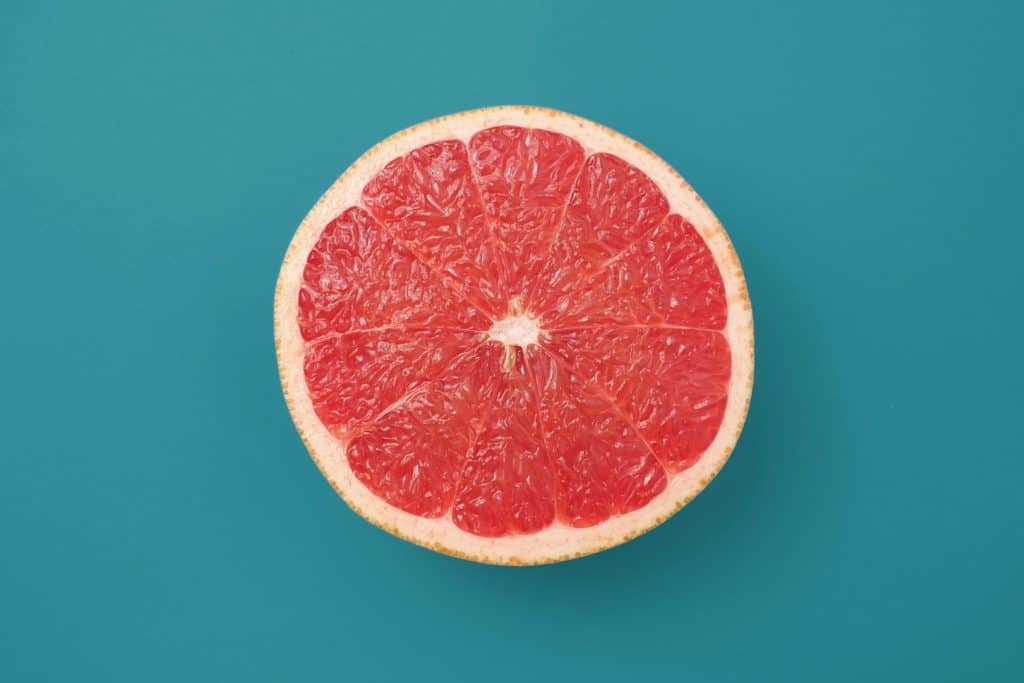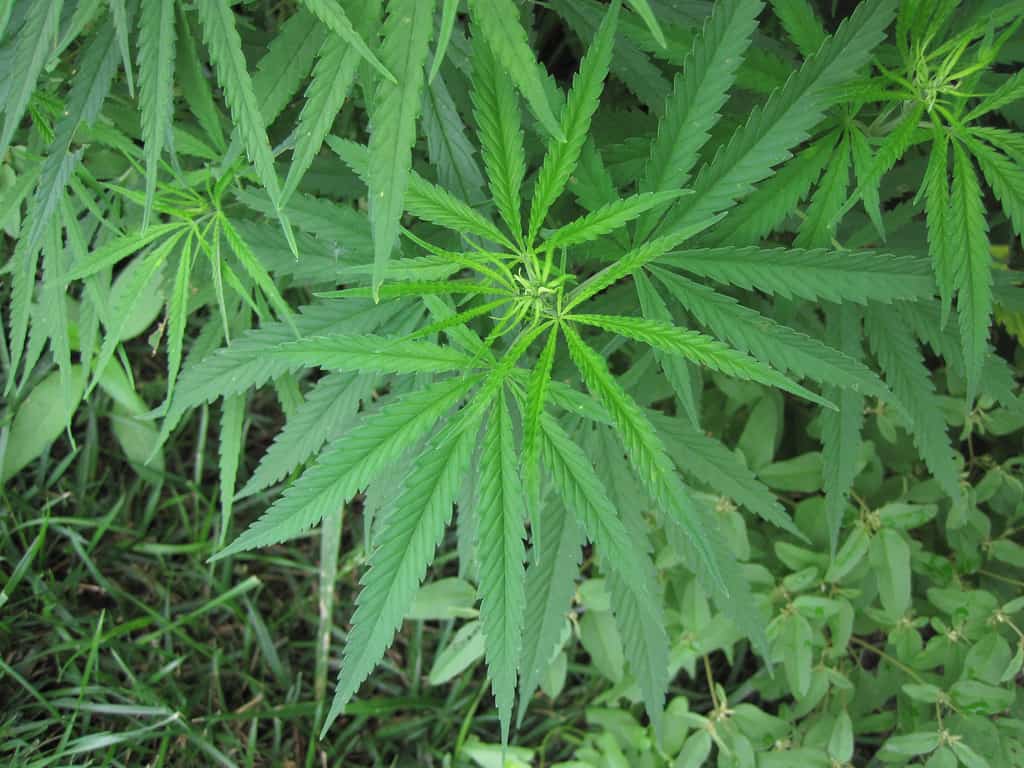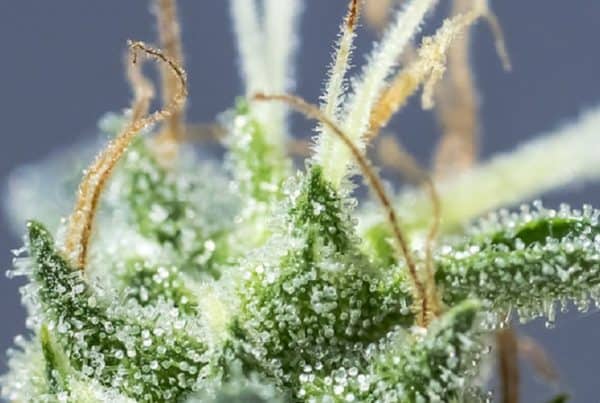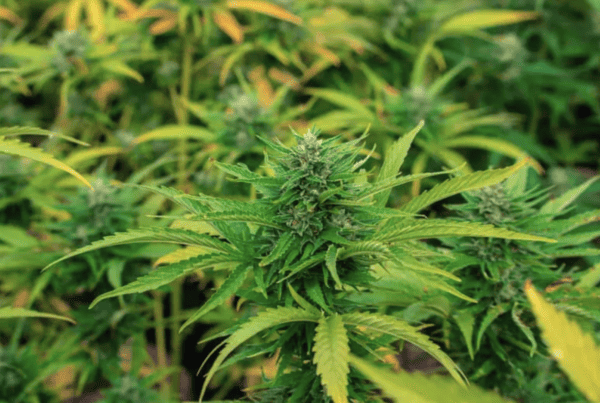TABLE OF CONTENTS
Here is an updated list of over 30 different terpenes plus their benefits. Terpenes are the mainstay of cannabis ensemble or entourage benefits.
Without them, cannabinoids would lack the synergistic benefits that make their healing effects pronounced and sustained. This means that terpenes are integral to the success of cannabinoid-based therapy.
This is why full-spectrum products are becoming increasingly popular and preferred above isolates and distillates.
Along with words like “cannabinoids,” the term terpenes is becoming increasingly common in everyday marijuana banter, and as the industry continues to grow, its use will only increase.
What Are Terpenes?
Simply put, terpenes are the fragrant oils that cannabis and other plants naturally possess that define their aromas and flavors. They’re what give Lemon Skunk its distinctive citrusy funk and Chem Dawg its pungent diesel-fuel properties.
Each strain is different, and terpenes are the most obvious element that set them apart. Terpenes are found in many other plants as well. Do you love the smell of fresh basil? Yep, you can thank terpenes for basil’s enticing fragrance.
Cannabis terpenes are most strongly detected in mature, unfertilized (unseeded) flower. Unfortunately, these terpenes can degrade easily in cured flowers through improper storage, handling, and exposure to light.
Any discussion about terpenes should also touch on cannabinoids. Terpenes and cannabinoids (including THC and CBD) both contribute to the effect of cannabis when consumed.
Both bind with receptors in the brain to produce an overall effect on our bodies—including the euphoric high most people seek from the cannabis experience.
The medicinal benefit from the interactions of terpenes and cannabinoids warrants continued study. Some cannabis patients favor the results of whole cannabis (flower) therapy over synthetic or cannabis concentrates, such as distillates, which remove natural terpenes.
Suffice it to say that the cannabinoid/terpene relationship is both fascinating and complex, but terpenes alone will be the focus here—and there’s plenty to discuss.
Although cannabis contains more than 140 types of terpenes, only about a dozen are common, and we’ll focus on the most relevant of these.
How Do Terpenes Work?
Terpenes are able to produce their therapeutic benefits by interacting with the endocannabinoid system.
In 1988, two cannabis scientists―S. Ben-Shabat and Raphael Mechoulam―discovered that cannabinoids, terpenes, and flavonoids can work together to create a synergistic healing effect.
Simply put, when you consume a cannabis extract that is full-spectrum you are likely to experience a healing effect that is stronger and will last for a longer time through an effect of symbiosis. In a nutshell, we experience the healing benefits of terpenes through the entourage effect.
What Is The Boiling Point of Terpenes?
Each terpene will have a different boiling point based on its unique chemical makeup. Generally, terpenes start to boil at 155°C (311°F). Like myrcene boils at 166°C (330°F).
However, they start to breakdown at a lower temperature of about 21°C (70°F) to 37°C (100°F).
What is the Difference Between Primary and Secondary Terpenes?
Primary terpene in cannabis are found in high amounts and they are responsible for the aroma produced by cannabis strains. Secondary terpenes may be found in small amounts and contribute to the effects produced by a strain.
List of Primary Terpenes in Cannabis
1. Myrcene
This is the most abundant terpene in cannabis and may make up as much as 65% of the total terpene profile in some strains. It produces earthy or musky notes, similar to cloves. Myrcene helps to reduce inflammation and chronic pain and may be included in cancer treatment.
It is believed that eating a mango about 45 minutes before smoking weed will produce a stronger mental buzz. Mangoes are rich in myrcene and this may help to boost the effect of THC.
Myrcene is the most common terpene produced by cannabis and is also found in many other plant species. If you favor musky, earthy, skunky indicas like Northern Lights, you most likely appreciate myrcene and its couch-lock “I’m in for the evening” effects.
Cannabis strains that contain 0.5% or more myrcene are those that produce the sedative, deeply relaxing qualities many medical and recreational cannabis consumers enjoy. So, if your evening plans are no more ambitious than a pizza delivery and binge-watching Invader Zim, a heady indica rich in myrcene may be right up your alley.
2. Limonene
This is the second most abundant terpene in cannabis, and it produces a citrusy aroma. It is also found in high amounts in the rind of citrus fruits such as oranges and tangerines. It is commonly used in the manufacturing of cleaning products and cosmetics.
Limonene is a mood-enhancer often used in aromatherapy. It also has antifungal and antibacterial properties. Recent studies have revealed that this terpene may have a role to play in reducing tumor size.
Limonene is a terpene derived from pinene, and, like pinene, its name is a giveaway for what it smells like—lemons! Cannabis varieties like Super Lemon Haze are high in limonene. Consuming these strains promotes a general uplift in mood and attitude.
This citrusy terpene is the major component in citrus fruit rinds, rosemary, juniper, and peppermint, as well as in several pine needle oils, and these plants use limonene as a natural insecticide against creepy-crawly predators.
From a therapeutic perspective in patients, limonene may prove beneficial in protecting against various cancers. Orally administered limonene is currently undergoing clinical trials for breast cancer treatment.
Of all the terpenes found in cannabis, limonene is a favorite of many.
The essential oils and aroma of limonene are familiar to anyone who has smelled cleaning solutions like Lemon Pine Sol or lemon-scented furniture polish. Limonene also is a vital ingredient in many cosmetic products.
Limonene’s Effects
Limonene is known to produce a range of effects. Some people even use it as a dietary aid because it’s known to inhibit appetite. Limonene is known for its antioxidant and antibacterial properties—which is one reason it’s often found in detergents and cleaning products, in addition to its clean scent.
When consumed in cannabis, the medical applications of limonene haven’t been fully explored, but there is evidence it has a great number of potential uses. It is known to be an antidepressant because it inhibits the secretion of hypothalamic-pituitary-adrenal (HPA) stress hormones.
Other things for which limonene may provide a significant benefit include preventing and fighting cancer, boosting immunity, aiding gall bladder function and health, preventing indigestion, decreasing anxiety and insomnia, as well as preventing fatty liver and insulin resistance in diabetics.
Limonene also is known to fight pain and curb inflammation, which are two conditions that often occur simultaneously. There also are indications that limonene may help prevent Alzheimer’s Disease and help treat Crohn’s, irritable bowel syndrome, and fibromyalgia.
Research conducted about the health effects of limonene has occurred at the University of Arizona Cancer Center; Hamdard University, India; Unidade de Pesquisa Clinica, Brazil; Biopark Campus; and the Department of Environmental Medicine, Kochi Medical School, Japan.
3. Linalool
Linalool is responsible for the floral notes in cannabis. It is also common in lavender and aromatic herbs. It produces relaxation and induces sleep.
Linalool has floral and lavender undertones. Varieties high in linalool promote calming, relaxing effects. Linalool has been used for centuries as a sleep aid and is widely known to reduce stress.
Found in strains like Lavender and Skywalker OG, linalool is also used to relieve seizure symptoms and provide relief to those suffering from psychosis.
Linalool lessens the anxious emotions sometimes provoked by pure THC, thus making it helpful in anxiety treatment. Studies also suggest that linalool boosts the immune system.
Not quite as common in cannabis as myrcene and limonene, linalool is one of the secondary terpenes that’s quite prevalent in the plant, although by no means is it found in every strain or even the majority of strains. It has a distinctive aroma that many people quickly relate to the smell of marijuana.
This terpene is colorless or a pale shade of yellow. It is found in many commercial products like perfumes, shampoos, cleansers, detergents, and soaps. It also is present in some insect repellants and is known to repel fleas, mosquitoes, and cockroaches.
Tests conducted on mice and linalool indicate that it reduces anxiety and panic behavior, and there is plenty of anecdotal evidence that linalool produces a similar reaction in humans.
Linalool is also known for its analgesic properties, so many of the strains that contain it are known for their pain-relieving effects.
This is notable, because there is a need for pain-relieving drugs that can someday replace dangerous opioids, which are known to cause an unacceptable loss of life. Linalool is known to elevate the levels of adenosine, an inhibitory brain chemical known to block pain.
One study that exposed patients to linalool-rich lavender oil showed great promise for linalool’s pain-killing properties. Patients receive enough pain relief that they were able to forego use of traditional pain killers—namely opioid drugs.
Linalool has also shown promise for improving memory. The uses for this terpene in the treatment of Alzheimer’s disease has not been widely studied, but the research conducted so far indicate it has promising potential for this incurable condition.
Statistical data collected in 2018 suggests that 5.7 million Americans of all ages suffer from Alzheimer’s, with 5.5 million of those people being age 65 or older. Ten percent of people over 65 are officially diagnosed with Alzheimer’s, making it a disorder of special concern.
This progressive and currently irreversible disease results in brain degeneration and loss of memory and cognitive abilities. Treatment strategies so far have been largely unsuccessful, and there is no known cure at this time.
It also is known to be beneficial in thwarting bacterial and fungal growth and possibly for treating cancer. The full range of linalool’s beneficial properties remains largely untapped, and the future medical uses for this terpene could encompass a range of treatments.
4. Caryophyllene
It has a strong spicy aroma and is also common in black pepper, cinnamon, and spices such as oregano, basil, and rosemary. Caryophyllene is the only terpene that binds to CB2 receptors.
It is commonly used in topical creams as an anti-inflammatory agent. Besides this, it has shown promise in alcohol addiction rehabilitation.
In addition to its presence in cannabis, beta-caryophyllene is found in many plants, such as Thai basil, cloves, cinnamon leaves, and black pepper.
This terpene’s aroma is peppery, woody, and/or spicy. Strains like AK-47, Girl Scout Cookies, and White Widow contain caryophyllene. Like limonene, studies show β– caryophyllene holds promise in effective cancer treatment.
5. Alpha-pinene and Beta-pinene
Pinene terpenes have the aroma of pine trees. They produce anti-inflammatory effects in humans also, they help to improve airflow in the lungs and respiratory function. They also inhibit memory loss related to the excessive use of THC.
As its name implies, pinene is a terpene known for its pine and fir aroma. This terpene occurs in pine and other coniferous (and some non-coniferous) plants, balsamic resin, and some citrus fruits. Pinene is used in medicine as an anti-inflammatory, expectorant, bronchodilator, and local antiseptic. Although found in cannabis, scientific indications suggest that high levels of pinene may actually lower the effects of THC.
Never fear, though. Some excellent varieties of cannabis contain this terpene. Sativa-dominant strains like Blue Dream and Jack Herer possess pinene. All it takes is one whiff of these flowers to detect a distinct pine aroma—and few people complain about a lack of potency in these strains!
6. Humulene
Humulene is a primary terpene that is common in hops. It gives off an earthy aroma with spicy notes. Humulene is also found in sage, cloves, and black pepper. It has appetite- suppressing properties. It also helps to combat inflammation.
If you love a good pint of IPA, strains rich in humulene may be particularly enticing to your taste buds. In addition to its presence in a number of sativa-dominant strains, humulene is found in hops and Vietnamese coriander. This terpene is what gives beer its distinct hoppy aroma.
Humulene is considered to be antitumor, anti-bacterial, and anti-inflammatory, as well as a pain reliever and appetite suppressant. It has commonly been blended with β–caryophyllene and used as a remedy for inflammation.
Humulene has been used for generations in Chinese medicine, and it aids in weight loss due to its appetite-suppressant properties.
Traditional Chinese medicine incorporated humulene in several remedies especially where inflammation, allergies, and bacterial infections were concerned.
Humulene is found in many cannabis strains as you will see later in this article. It is also found in high amounts in hops (humulus lupulus) which is used to ferment beer.
The aroma of humulene is described as herbal, woody, or earthy.
A study that was published in the European Journal of Pharmacology found that humulene reduced signs of inflammation in mice. The study concluded that further investigation was needed to examine the role of this terpene in treating inflammatory disease.
A later study that was carried out in 2008 confirmed these findings when humulene was administered via oral and topical routes. This and other subsequent studies have shown that humulene could be useful in relieving inflammation in conditions such as allergic rhinitis.
7. Terpineol
This is a rare terpene that smells of lilacs. It has calming and mood enhancing properties. Some recent studies have also shown that it can exhibit antimalarial properties.
The aroma of terpineol not only hints of lilac but also flower blossoms, as well as pine and clove. Not surprisingly, terpineol often is found in cannabis varieties that have high pinene levels, which, unfortunately, mask the more subtle fragrances of this terpene.
Terpineol is known to have calming, relaxing effects, and studies indicate that cannabis-extracted terpineol has antioxidant properties as well.
Among the primary cannabis terpenes, terpineol can be more difficult to detect than some of the others. Frequently, terpineol is found in cannabis strains that also are rich in pinene, which has a bold aroma that often masks the more subtle terpineol.
As a lone terpene, terpineol’s aroma is best described as floral, with a soft fragrance of lilac blossoms with a slight citrus twist. In the flavor department, terpineol has been likened to mint and anise, with semi-sweet lime notes. Terpineol is found in a number of other plant species besides cannabis, including lilac, pine and fir trees, eucalyptus, and lime blossoms.
8. Valencene
This is an exotic terpene that is found in significant amounts in the sweet Valencia oranges. It has a sweet citrusy aroma and offers insect repelling benefits.
Valencene is a rare terpene with a citrus, herbal, and woody aroma. It is commonly found in Valencia oranges and other citrus fruits. Limited research on animal models has shown that valencene terpene may have anti-inflammatory, anti-allergy, skin protectant, and anti-cancer effects.

Valencene is thought to produce blissful and mood-boosting effects. It may also have anti-inflammatory and anti-allergic properties. Valencene has many commercial uses, including food flavorings, cleaning products, cosmetic products, and pest control products.
Research into valencene’s effects is not conclusive. However, strains associated with relatively high valencene concentrations may cause euphoric and uplifting feelings and mood elevation.
9. Terpinolene
Terpinolene has a piney aroma with floral essences. It is also present in high amounts in sage and rosemary. It is commonly used in the manufacture of soaps and perfumes.
Some studies have shown that this terpene has depressant effects in the central nervous system. It induces drowsiness and may be used to reduce anxiety and stress.
10. Geraniol
This terpene has a tobacco-like aroma. Studies have shown that it can offer neuroprotection benefits.
11. Ocimene
This terpene has a tropical and musky aroma. Like most other terpenes, ocimene offers anti-inflammatory benefits. It also has antifungal and antiviral properties.
Secondary Terpenes in Cannabis
12. Phellandrene
Phellandrene is a terpene with a rich history. From thousands of years back it has been used in Traditional Chinese medicine to relive digestive disorders. It has also been used to treat fungal infections. It is also found in eucalyptus oil.
13. Delta 3 Carene
This terpene produces a pleasant cypress aroma. It helps in the healing and restoration of broken bones. It also improves memory and may be used in the treatment of Alzheimer’s disease.
14. Alpha-bisabolol
Alpha-bisabolol, also known as levomenol, produces a sweet tropical aroma. It is also found in high amounts in chamomile flower and candeia tree. It has been used to treat bacterial infections on the skin.
15. Eucalyptol
This terpene is also known as cineol and it is produces minty notes similar to what is produced by eucalyptus trees. It has antibacterial and antifungal benefits. Preliminary research reports have shown potential of this terpene in treating Alzheimer’s disease.
16. Pulegone
This terpene is found in small amounts in cannabis strain while higher amounts may be found in rosemary. It has a pleasing peppermint smell and may help to combat pain and high temperatures. It also has insecticidal properties.
17. Sabinene
Sabinene is also found in Norway Spruce and Basil. It has a piney aroma and offers potent antioxidant benefits.
18. Trans-nerolidol
This is a secondary terpene that is also common in flowers such as jasmine, lemongrass, and tea tree oil. It has floral woodsy aroma. It is best known for its antiparasitic effects.
19. Camphene
Camphene has a strong aroma of fir needles. When it is mixed with vitamin C it becomes a powerful antioxidant. It has also shown potential in the treatment of eczema and psoriasis.
Some studies have demonstrated that camphene has antifungal properties when it is combined with sage oil. It can be mixed with other essential oils such as holy basil and applied to the skin to fight fungal dermatitis.
When camphene is combined with tulsi essential oil it is able to relive respiratory symptoms such as in bronchitis. When diluted it acts as a cough suppressant and a decongestant.
Anti-inflammatory Benefits
Camphene has anti-inflammatory benefits when combined with other cannabis-derived terpenes. Chronic inflammation is an underlying factor in a couple of chronic diseases such as diabetes.
Camphene has also been used to treat mosquito bites.
Apart from its therapeutic uses, camphene is also a source of fuel and was used to light lamps several years back. It is also commonly used in the preparation of fragrances and as a food flavoring agent.
20. Borneol
Borneol has a herbal and minty aroma and may also be found in high amounts in rosemary, camphor, and mint. It is known for its insecticidal properties. It also has anticancer effects, as one recent study has shown.
Borneol terpene is a bicyclic monoterpene that has been used for thousands of years in Chinese herbal medicine to treat inflammation, pain, and respiratory conditions.
It is also commonly used in natural insect repellents and by the fragrance industry to create colognes and perfumes.
Borneol used to be commonly harvested by tapping the tree trunk of dryobalanops aromatica, also known as the camphor tree, then re-condensed into a clear substance. Modern borneol production uses turpentine oil or camphor and then crushed into a powder to use topically.
21. Phytol
This is a rare terpene that produces a floral balsamic aroma. It offers sedative and antianxiety benefits. It is also used as a de-stressing compound.
22. Fenchol
This is a mono terpene with a lemon-lime aroma. It is also common in basil. It offers antimicrobial and antibacterial properties.
23. Camphor
This is a secondary terpene that has a strong aroma this is perfect for repelling insects. It has been used for many years as a cold and cough remedy. It also helps to improve metabolism and circulation.
24. Nerolidol
This is a versatile terpene that is also found in ginger, tea tree, and jasmine. It produces a woody and fruity aroma. It helps to fight bacteria, fungi, and parasites.
25. Guaiol
This terpene is also referred to as champacol. It has a pungent aroma. It has been ued for many years to treat syphilis and regulate menstruation.
“
There are over 300,000 jobs in the cannabis industry. CTU trained me for one of them!

Makes $24.50 @ THC +
26. Bergamotene
This terpene has a spicy aroma like the one you expect to get from black pepper. It has anti-inflammatory, antibacterial, and antitumor properties.
27. Selinene
This terpene is also common in celery seeds. It exhibits anti-inflammatory and antioxidant benefits.
28. Octanol
This is a rare terpene in cannabis and it produces a floral aroma. It can be used in alleviating symptoms of essential tremors as well as other neurological tremors.
29. Terpinene
This terpene is commonly used as an additive in the pharmaceutical industry. It has powerful antioxidant benefits.
30. Geranyl Acetate
This terpene is common in lemongrass and citronella, and cannabis as well. It has a fruity aroma and offers antimicrobial benefits.
31. Isopulegol
This terpene has a menthol aroma and offers gastro protective benefits. It has also helped to minimize the frequency of seizures in animal studies.
Do Terpenes Get You High?
While terpenes can certainly affect your high, they won’t produce any intoxicating effects like THC’s euphoric sensations. Vaporizing and inhaling natural terpenes (and a carrier) won’t produce a buzz, but you may feel lightheaded or a slight unfamiliar feeling.
Terpenes, however, may diminish certain effects of THC such as its ability to induce paranoia and anxiety, especially for users who don’t frequently consume cannabis. Terpenes won’t get you high, but they might improve your overall experience.
How To Use Terpenes
Now that you know about the potential of terpenes in your cannabis consumption regimen, you can consume them in a variety of ways. One of the most efficient ways to consume terpenes in cannabis flower or concentrates is through vaporization.
Desktop and portable vaporizers for dry herb and cannabis extracts allow users to heat their material at low enough temperatures to retain terpenes, which have a lower boiling point than cannabinoids like THC.
Each terpene has a different boiling point. For example, myrcene’s boiling point is 334ºF. Pinene boils at 311ºF. THC boils at about 220ºF. Vaporizers with precise temperature control can help users slowly reach those temperatures for a flavorful experience.
Consumers can also buy terpenes for sale in the form of terpene oil from a number of respected terpene brands such as True Terpenes, Floraplex Terpenes, Blue River Terpenes, The Terpene Store, Green Roads Terpenes, Fogg Terpenes, Kind Terpenes, Elevation Terpenes, and The Terpene Lab.
Are terpenes legal? Yes. Terpenes can be botanically-derived from a number of plants that aren’t cannabis. These producers make food-grade, natural, and organic terpenes that have been approved by the FDA for safe consumption. Infuse terpenes into edibles, concentrates, topicals, and more.
We’ve just begun to scratch the surface of the therapeutic potential of terpenes. As cannabis research restrictions relax, we’ll be able to better understand how exactly terpenes influence different cannabinoids and symptom relief.
List of Terpenes Conclusion
This list of terpenes is updated and covers the most popular terpenes in cannabis that have been isolated and investigated. We hope that the information helps you understand how terpenes can be used in a medical way in conjunction with cannabinoids such as THC and CBD.
Although the study of terpenes can be complex and challenging for even the most scientific mind, for the layman, terpenes play a huge role in providing variety to the many cannabis strains available on the market today.
Terpenes provide the unique, individual flavors of our favorite strains—and how bland life would be without variety!

Fred Hernandez
Fred Hernandez is a highly accomplished and versatile writer, boasting an extensive background in the cannabis industry. With an in-depth understanding of various sectors including cultivators, processors, retailers, and brands, Fred's expertise spans across the entire cannabis landscape. As a prominent contributor to CTU, he consistently delivers insightful articles exploring the latest developments, news, and regulations shaping the cannabis industry. Whether it's delving into the intricacies of cannabis products, cannabis strain reviews, or providing comprehensive analyses of cannabis laws, or sharing expert insights on cannabis cultivation techniques, Fred's wealth of knowledge positions him as an invaluable writer and educator for all cannabis-related subjects.












 Jeff was involved in an accident where he endured a traumatic brain injury. He had a week-long stay in ICU where brain surgeons
Jeff was involved in an accident where he endured a traumatic brain injury. He had a week-long stay in ICU where brain surgeons  100% risk free money back guarantee within 48 hours after purchase if student has not completed any of the courses or exams.
100% risk free money back guarantee within 48 hours after purchase if student has not completed any of the courses or exams.